I had never flown on a propeller plane before. So when we boarded a tiny aircraft with whirring blades, it was the first time I truly felt like an explorer — not just a tourist.
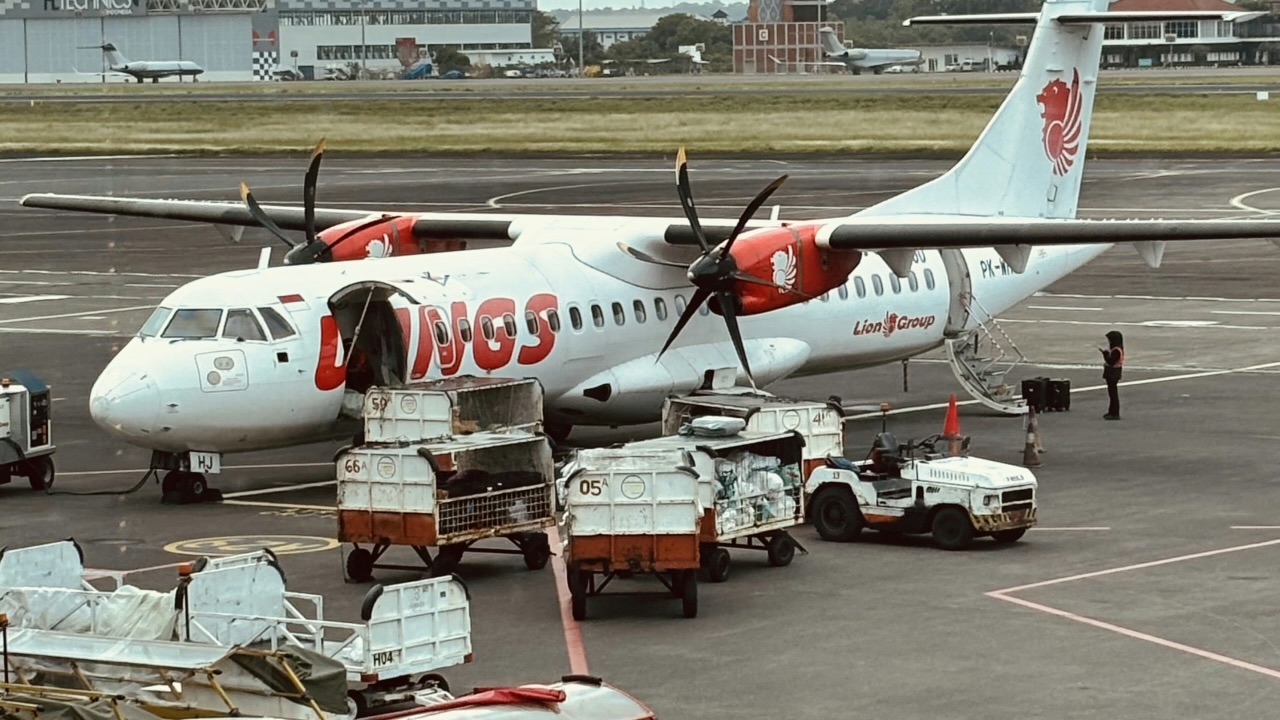
The engine roared like an old tractor, and through the window, instead of the sky, there was only an endless sheet of deep blue. It felt as if we were flying to a place where there was no connection to the world, and no plan B.
Tambolaka Airport — officially a “International Airport” according to the schedule — turned out to be charmingly small. One runway, a tiny waiting area, and maybe two baggage belts at most.
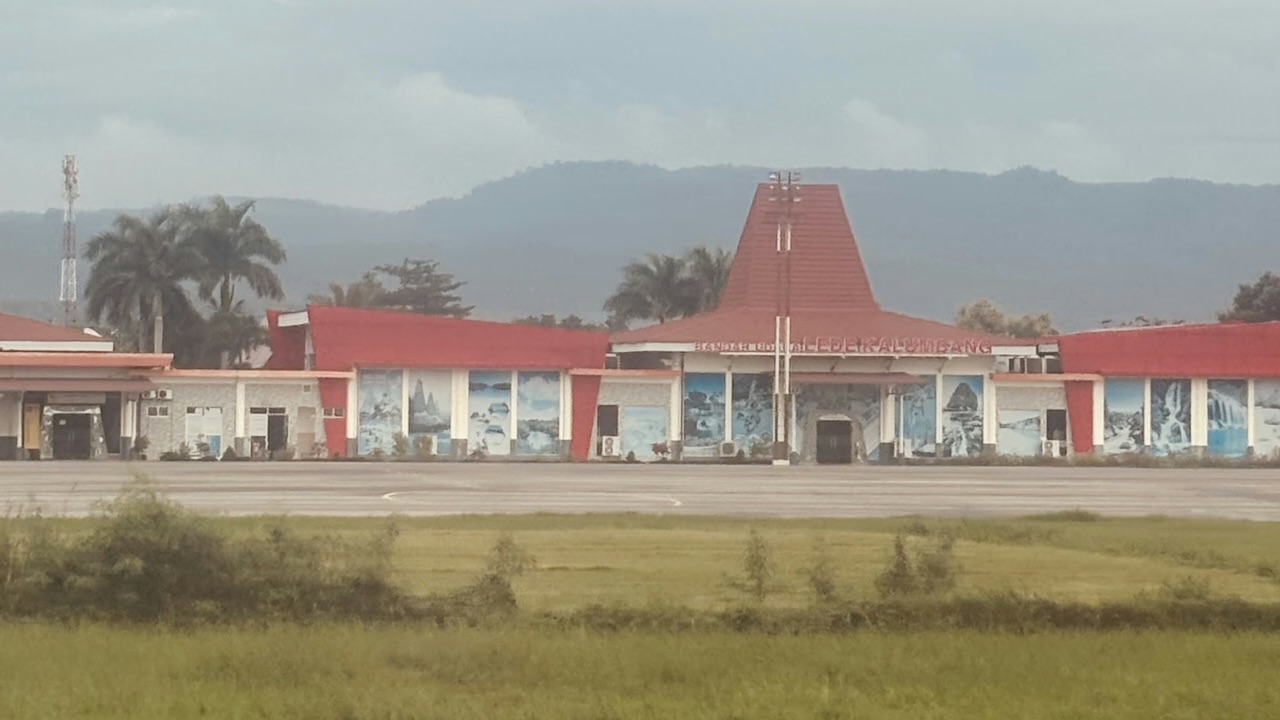
People stepped out, glanced around… and smiled. It felt like a scene from a movie — a real adventure starting in the middle of nowhere.
A car from the hotel was waiting for us. We headed west to Cap Karoso resort, about an hour’s drive from the airport. I’ll admit, I had expected battered dirt roads and a jungle trek vibe — but the road turned out to be quite decent. The only thing missing along the way? Everything. Cornfields, lone trees, a few motorcycles casting long shadows — and complete silence.
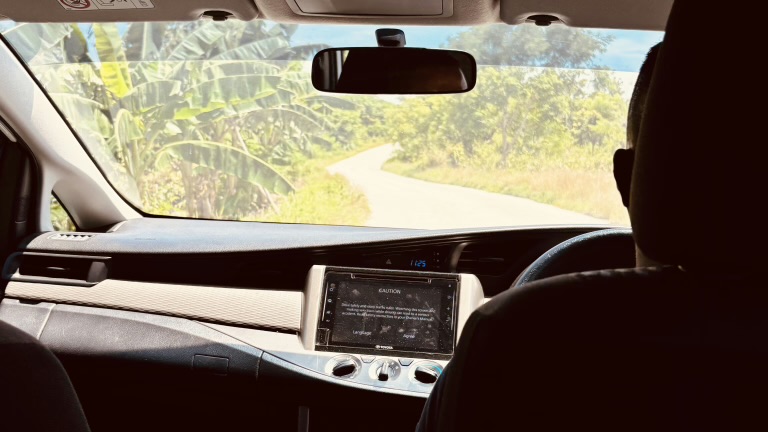
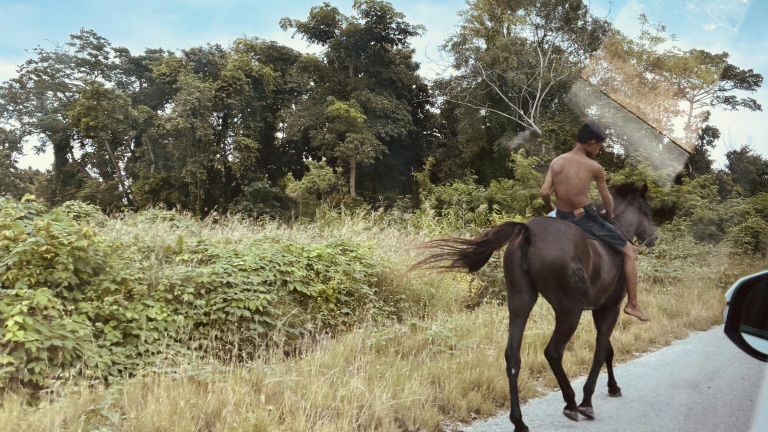
Every now and then, we passed tiny villages — just a few scattered houses. No shops, no cafés, no signs. Just pure nature, the wind, and occasionally — wild horses grazing near the coastline, like something out of a film.
The further we drove, the stronger the feeling that we were leaving behind not just Bali and the hustle of daily life — but everything familiar. Until we reached Cap Karoso, there was nothing but landscapes and the occasional smiling, waving local.
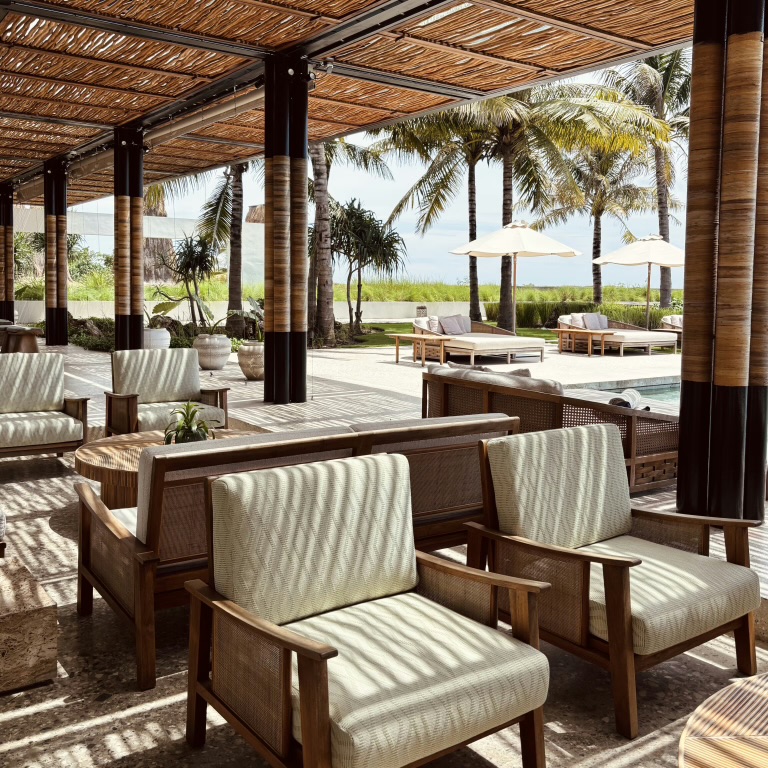
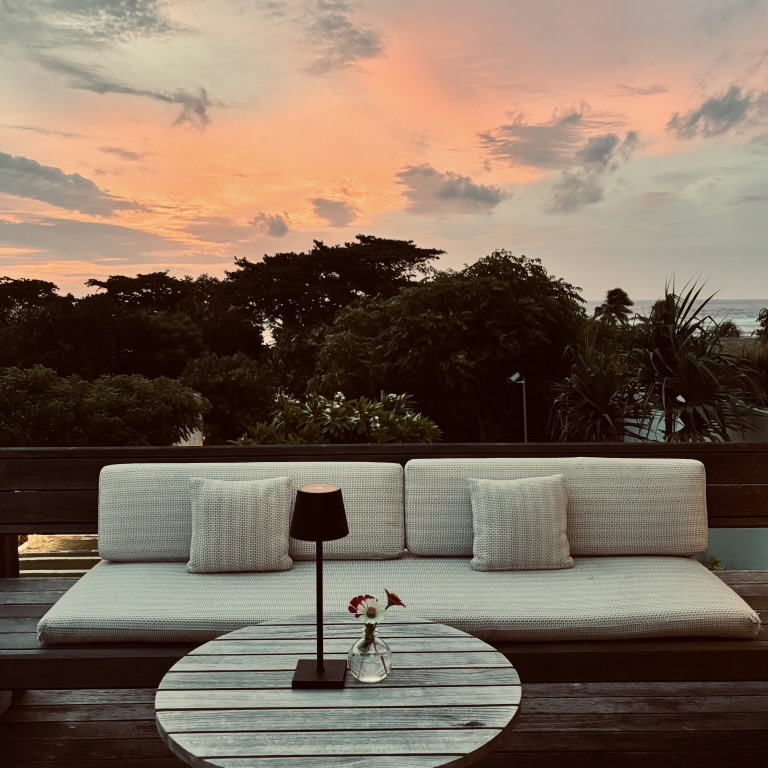
The resort was designed for total relaxation. Cap Karoso isn’t just a resort — it’s like a time machine to a better future. Thoughtful, aesthetic, intentional. A place you instantly want to stay.
But I’m not the kind to sit by the pool with a coconut all day — not when wild, untamed Sumba was waiting just beyond the gates.
So, decision made. On our first day, we grabbed bicycles, a map on our phones, and bravely set off toward a lagoon. There’s only one road. At some point, the asphalt gives way to dusty tracks, and it’s no longer you pedaling — the road itself carries you forward, through fields, past bushes, and through silent villages.
The internet signal weakens — one bar… then none.
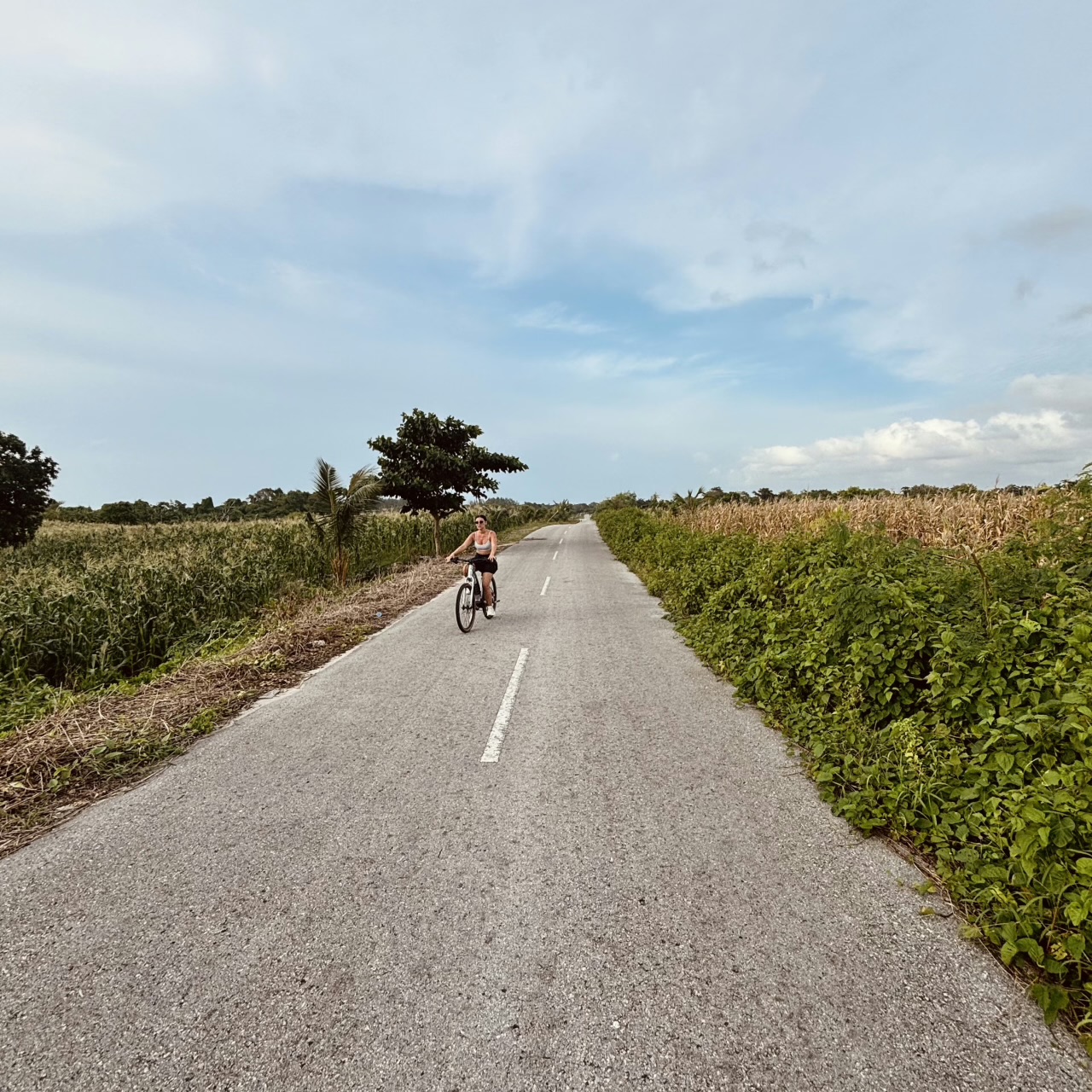
It feels like you’re lost, but on Sumba, if there’s only one road, it will eventually take you where you need to go.
Suddenly, out of nowhere — a small “checkpoint.” A group of kids, almost like an ambush. They wave first, then block the way. One jumps in front of the bike, another grabs the handlebars. The request is simple: “Kasih uang!” — “Give money!”
We didn’t mind, but we only had a large bill. No small change. We tried to explain in Indonesian that we’d pay on the way back. No luck.
First, they pouted. Then they started spitting. And then — small stones came flying. Not out of anger, but more as a show of strength: “Nothing personal, that’s just how it’s done here.”
We decided to keep moving, a little uneasy. Ahead was the lagoon — or so we hoped. But a few kilometers later, another “checkpoint.” More kids. Same demand.
And that’s when it hit us: having small change on Sumba is crucial. No ATMs. No shops to break a bill. Only kids with big eyes and clear expectations.
The road twisted up and down. On bikes, it wasn’t quite the carefree ride we’d imagined. Uphill was tough, downhill was terrifying — brakes squeaking, hands trembling, legs begging for a break.
Still — it was breathtakingly beautiful. So much so, that you didn’t even think to complain.
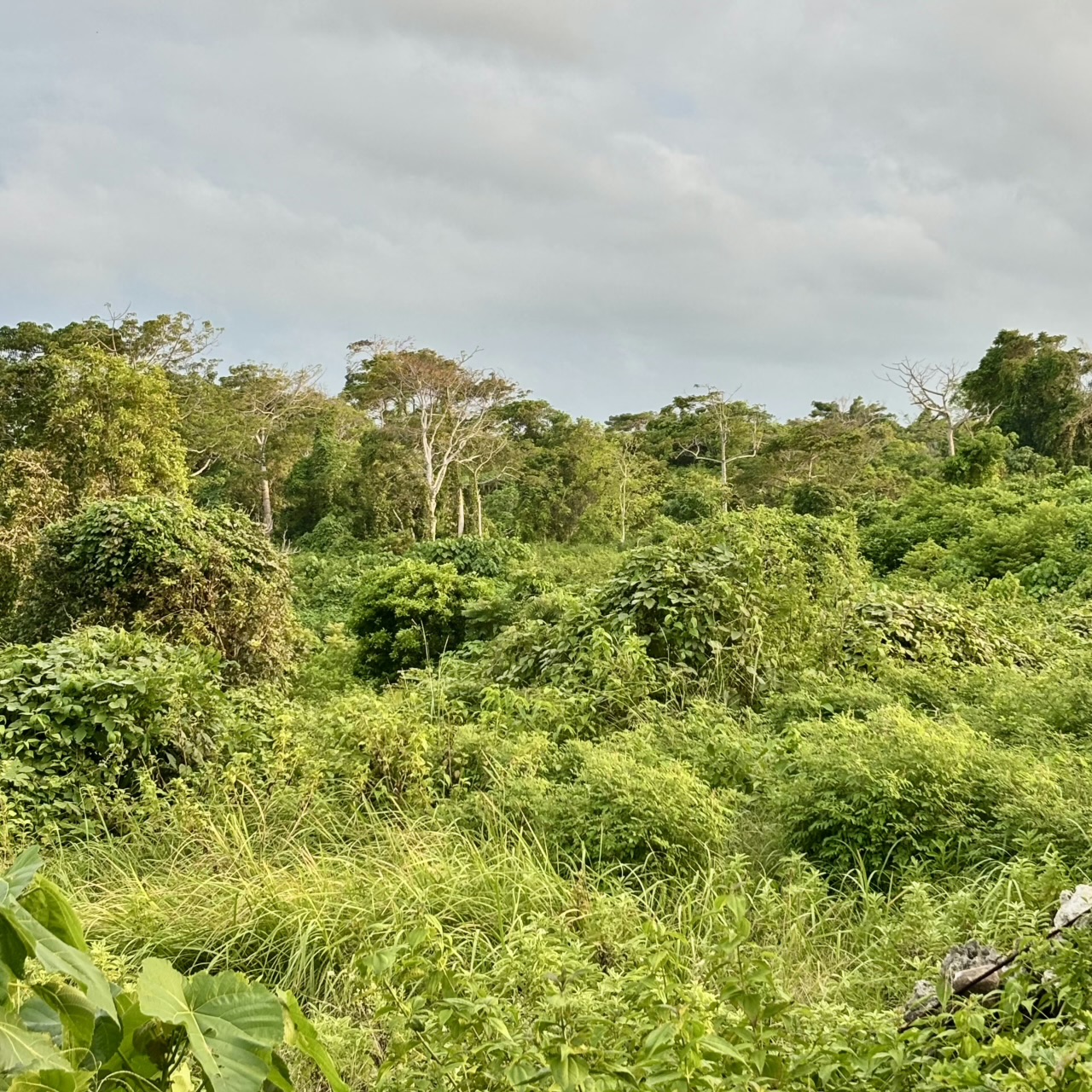
Occasionally, locals rode past on motorbikes, carrying children, baskets, or sometimes each other. Always waving, always smiling.
On Sumba, waving is a kind of unspoken rule: if you don’t wave, you don’t belong.
At last, a sign: “Waikuri Lagoon.”
Two boys around 12 years old greeted us. Very business-like, they instructed us to park our bikes by a small wooden table — apparently the “security post.” We obeyed — who were we to argue?
Entry fees seemed to be a flexible affair, depending on the time of day or maybe the mood. We arrived near 5 p.m., and only paid 20,000 rupiah. Paid, nodded, and were waved through — one boy leading the way like a presidential bodyguard.
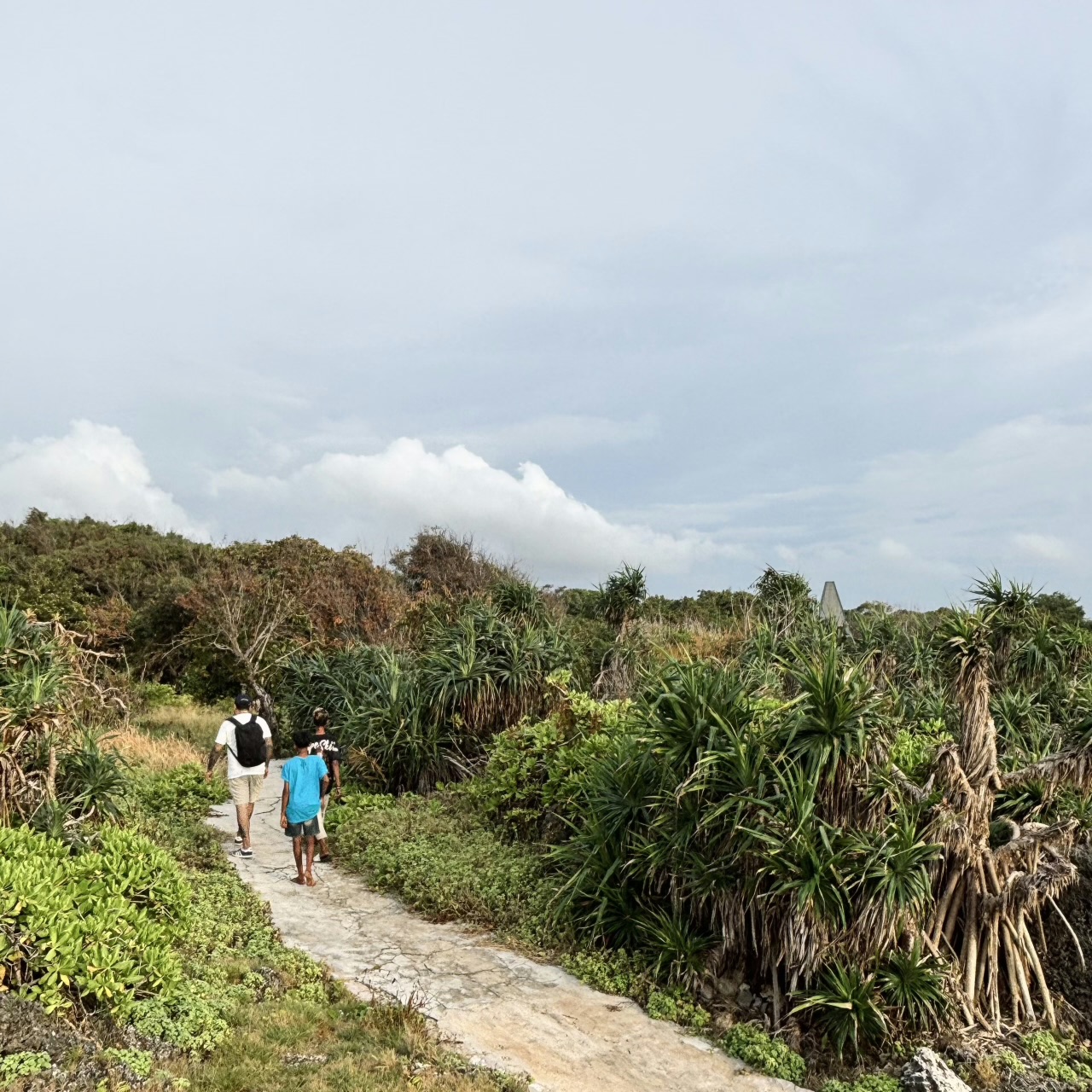
Five minutes later, we reached the lagoon. It looked like a postcard come to life — deep turquoise water, sunlight dancing on the surface, local kids laughing and splashing from a wooden pier.
No sun loungers. No beach bars. No music. Just life — pure, real, magical.
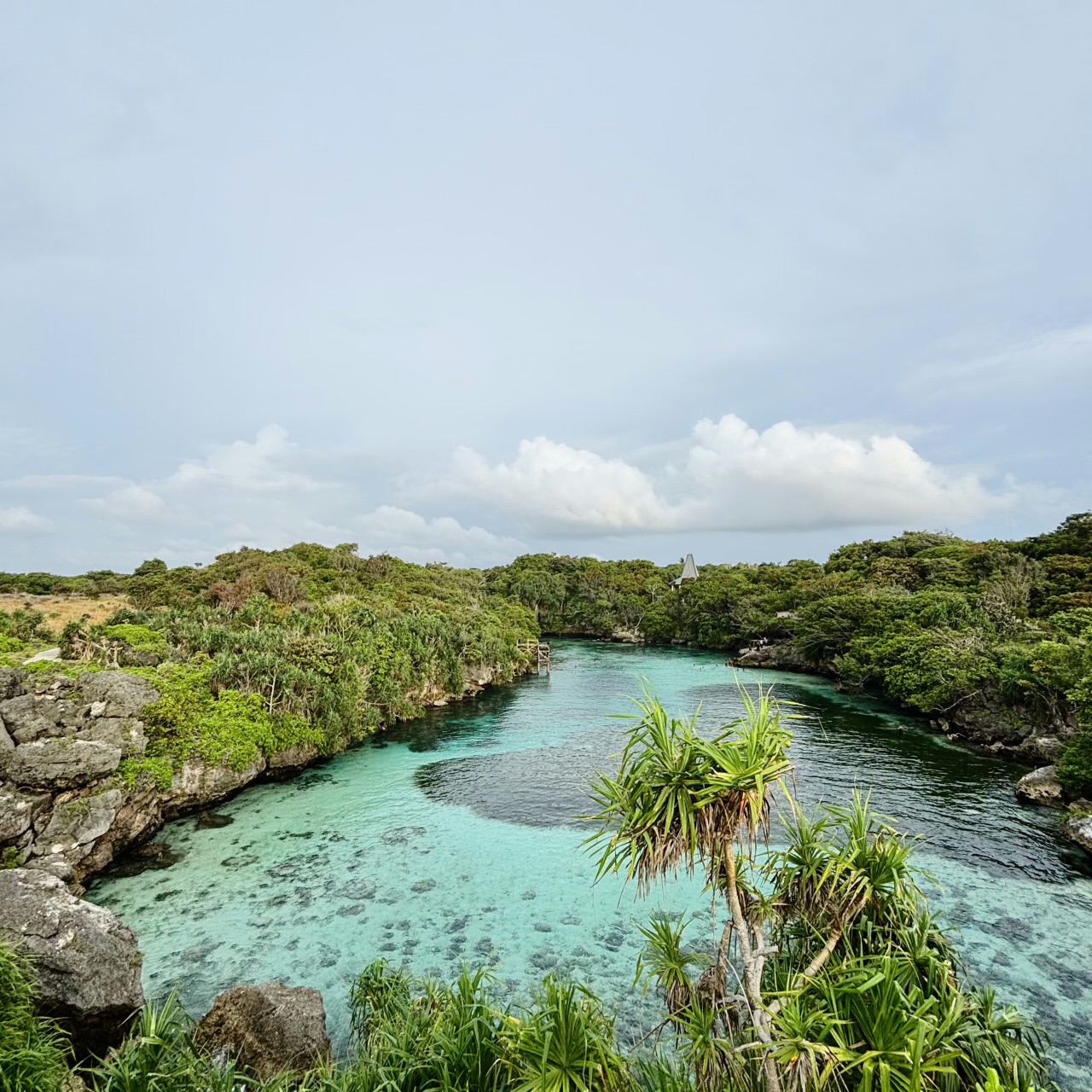
We stood there, silent, just taking it in. And at that moment, we knew: the bumpy road had been more than worth it.
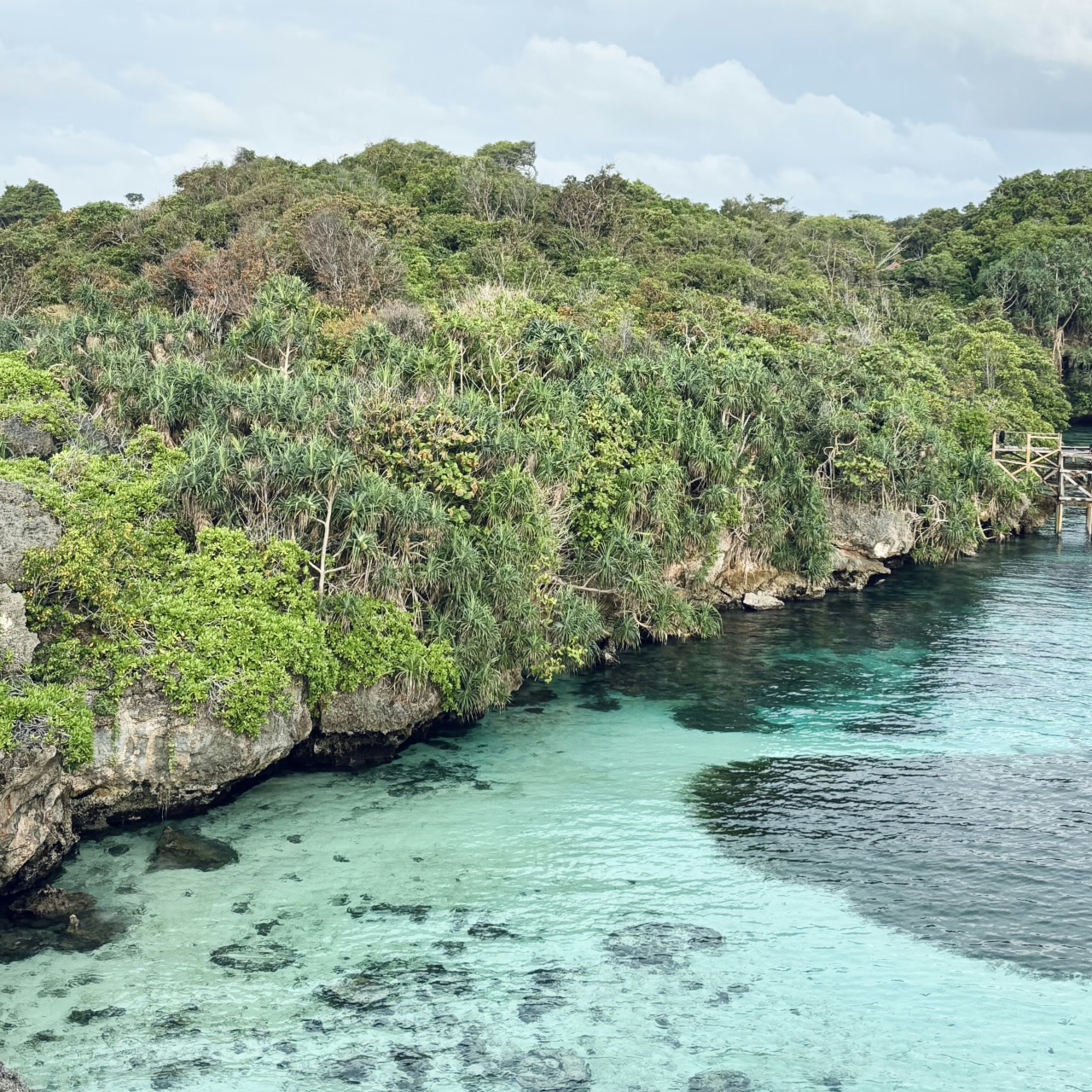
The boys stuck with us, chatting away. One spoke in fast Indonesian, the other sprinkled in shy but proud English words. We smiled, exhausted our limited “terima kasih” and “bagus sekali,” and somehow the conversation flowed.
— “Di sekolah cuma satu kelas.” (“There’s only one class at our school.”)
All ages learned together — six-year-olds with teenagers. One teacher for all.
After school, they guided tourists to the lagoon, earning a little money.
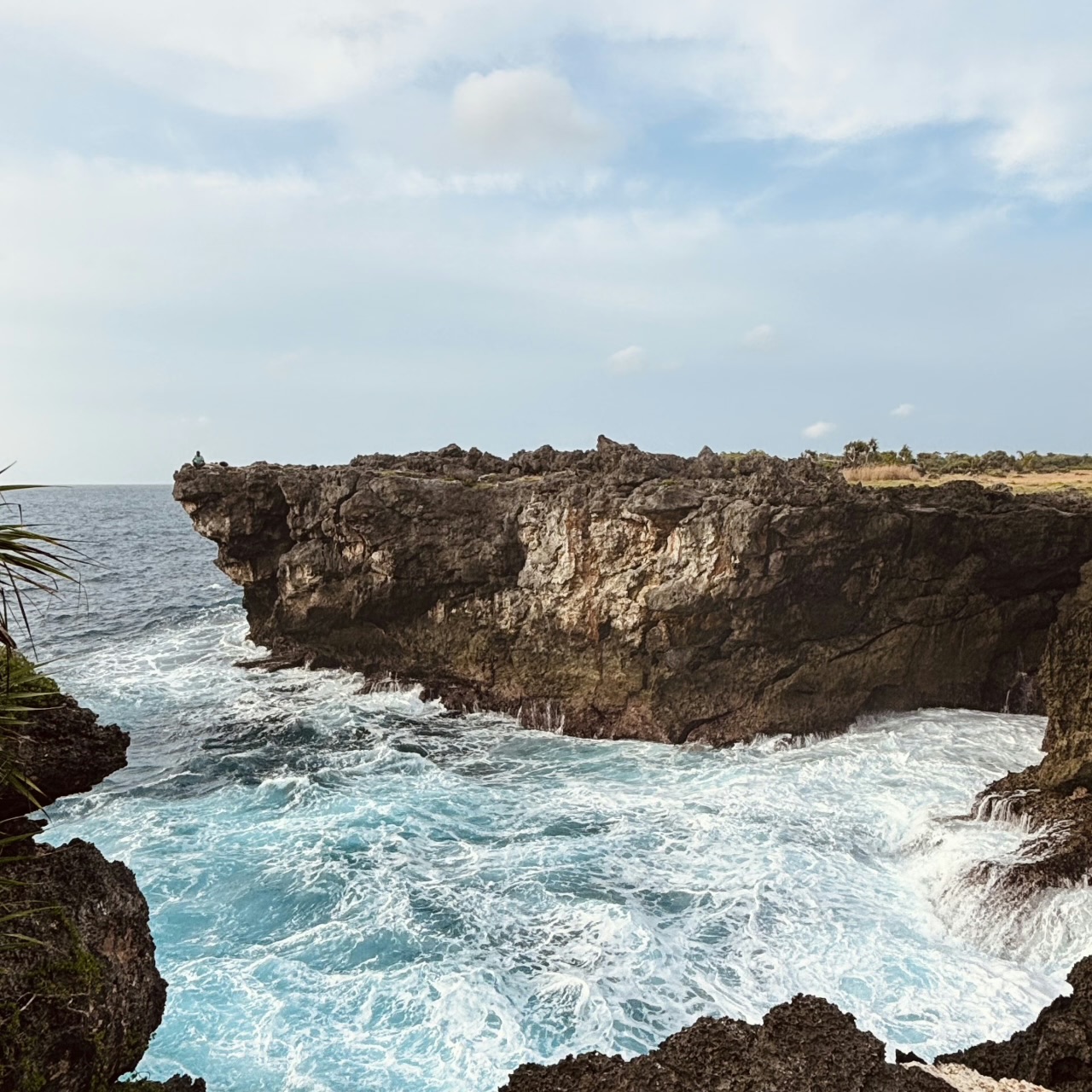
One boy confessed he dreamed of working at a big resort — a clean, beautiful world with air conditioning and swimming pools. Sometimes hotels invite village kids for special events, showing them glimpses of “another Sumba” — glimpses that ignite hope.
Riding back, the silence was almost thick enough to touch — only the sound of the wind in the leaves, birds singing, distant wild horses neighing. No cars, no people. Just us and the open road.
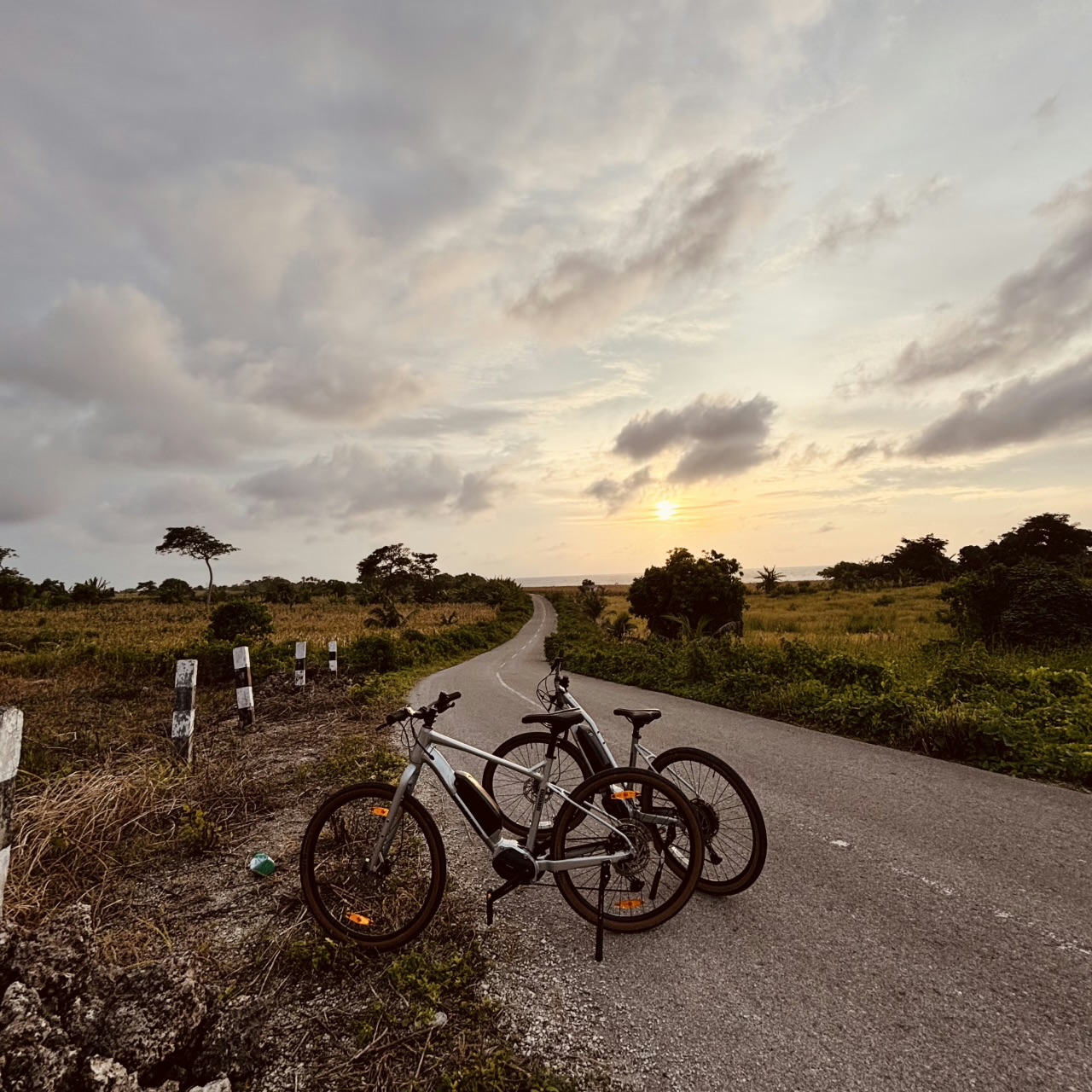
Phones were useless — trying to capture it all in photos felt absurd. The real beauty of Sumba can’t be trapped in pixels — you can only live it, and keep it inside you.
Before leaving the lagoon, we finally solved the small-change issue: buying a few candies from the local kids. That’s how “currency exchange” works on Sumba.
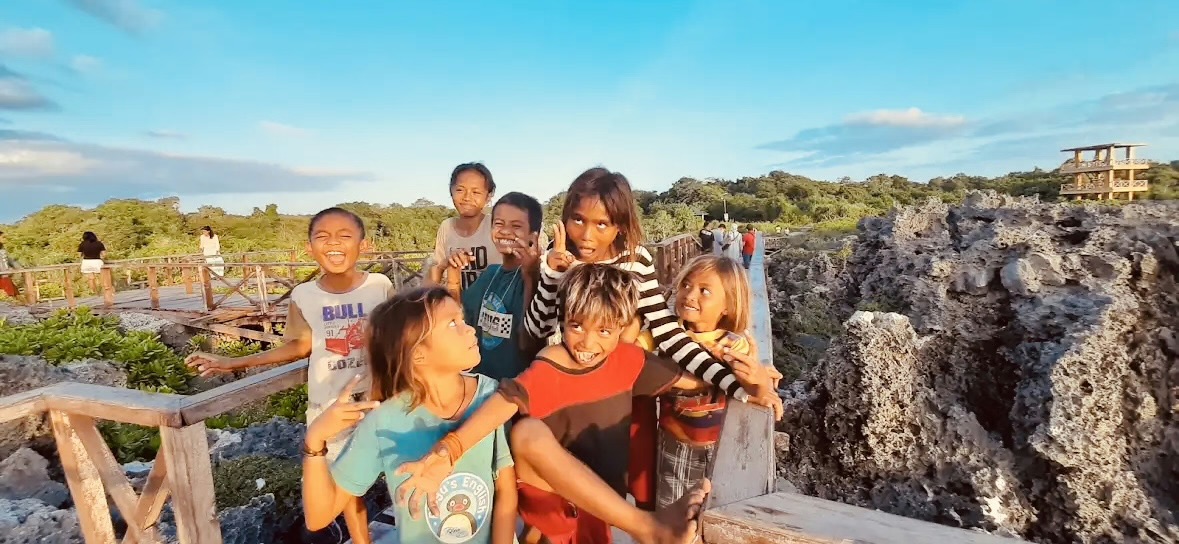
The ride back seemed easier — the warm wind, the golden sunset over the fields, legs no longer aching.
We coasted down the slopes, feeling like heroes ready for a rematch.
At the original checkpoint, the same kids waited. This time, we came prepared. We handed out coins; they squealed with joy, shouting, “Thank you, mister!”
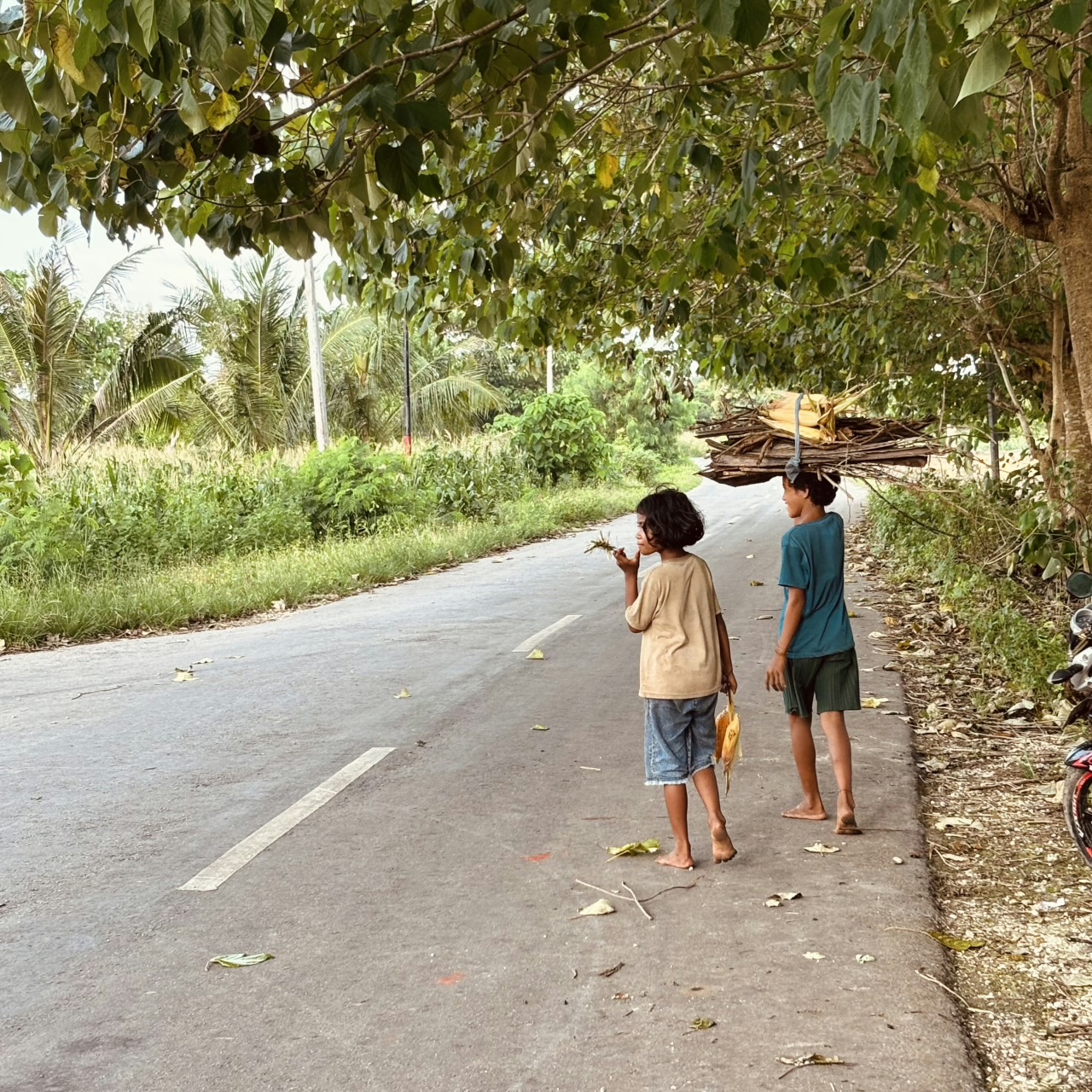
And yes, they still spit a little for good measure — but now it felt more like a cheeky tradition than hostility. We all laughed. Balance restored.
On the way back to Cap Karoso, we passed farmers hauling huge sacks of corn home — some on bikes, some on foot. Everyone waved, we waved back. It felt like everyone on Sumba waves — not to tourists, but to neighbors.
Before reaching the hotel, we stopped by Cap Karoso’s farm. Turns out, the resort grows all its own produce — vegetables, herbs, fruits — right on site. From basil and chili peppers to olive trees, oranges, and mulberries.

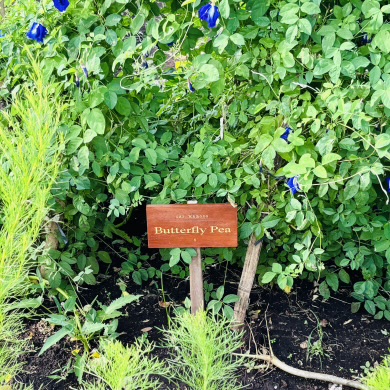
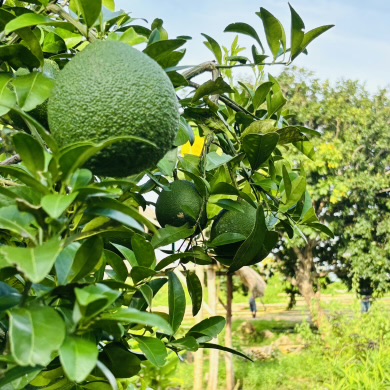
It’s not just convenient — it’s a philosophy. Local production, composting, recycling — an entire ecosystem working in harmony.
But most importantly: Cap Karoso gives jobs to local villagers. Confident servers, friendly receptionists, skilled gardeners — many of them graduates of the Sumba Hospitality Foundation, an incredible school that teaches English, hotel work, communication skills, sustainability — and self-belief.
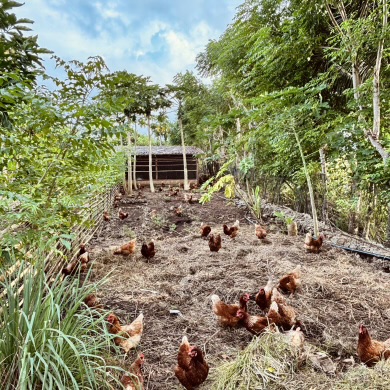
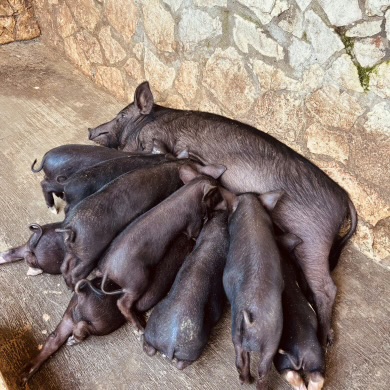
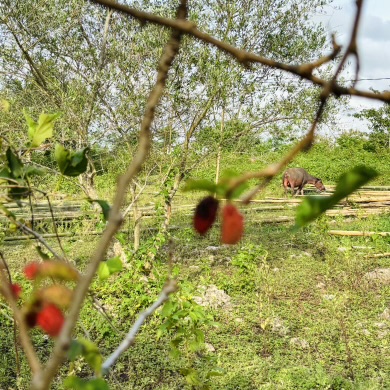
The next day, we rented an e-bike to ride about 40 minutes to Ratenggaro village. The sky was heavy with clouds and the wind fierce, but we were undeterred.
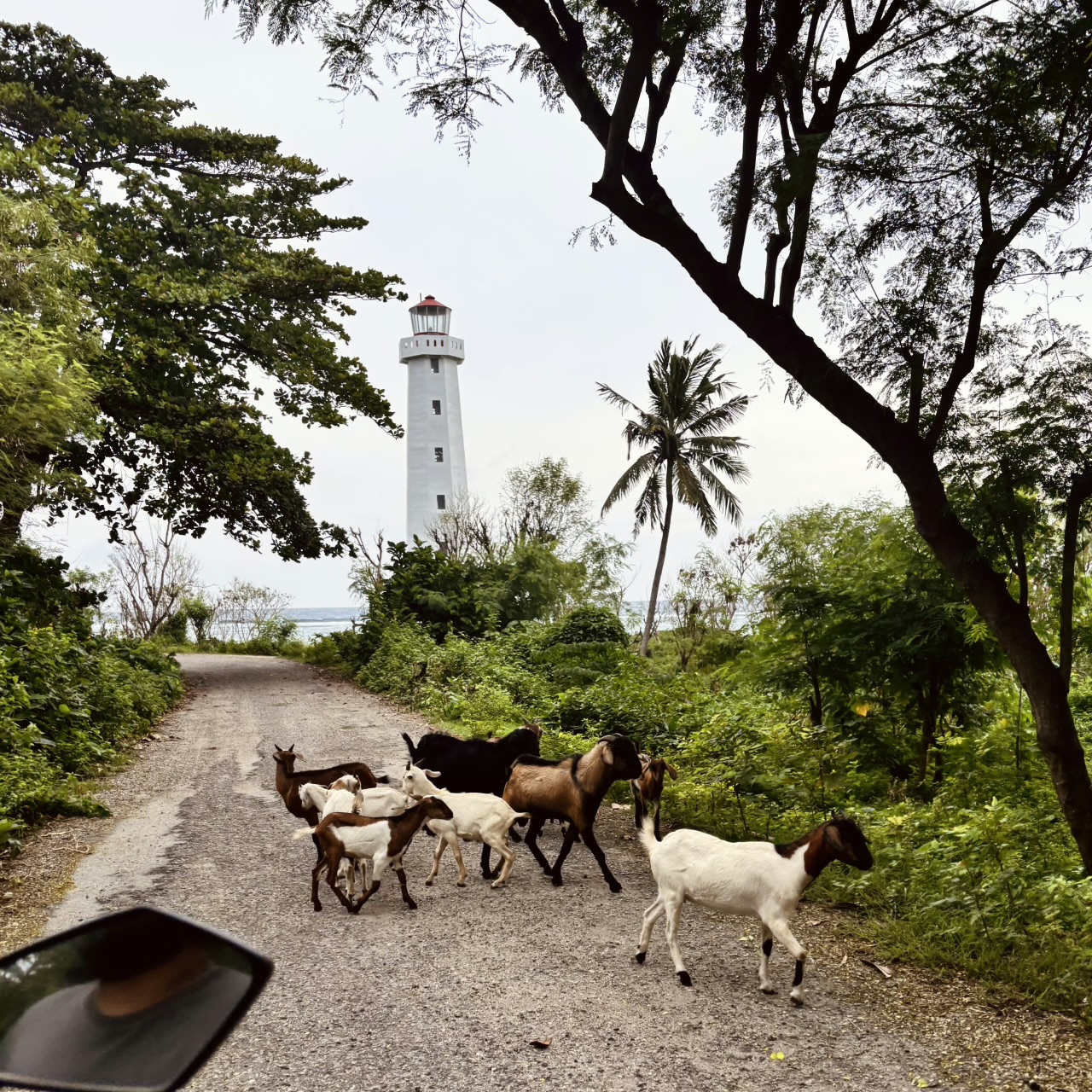
The ride started easily — smooth asphalt, beautiful views. But that didn’t last.
Closer to the villages, the road disintegrated into deep potholes and loose sand — pushing the bike by hand became the norm.
Near the villages, the track resembled a dry riverbed more than a road.
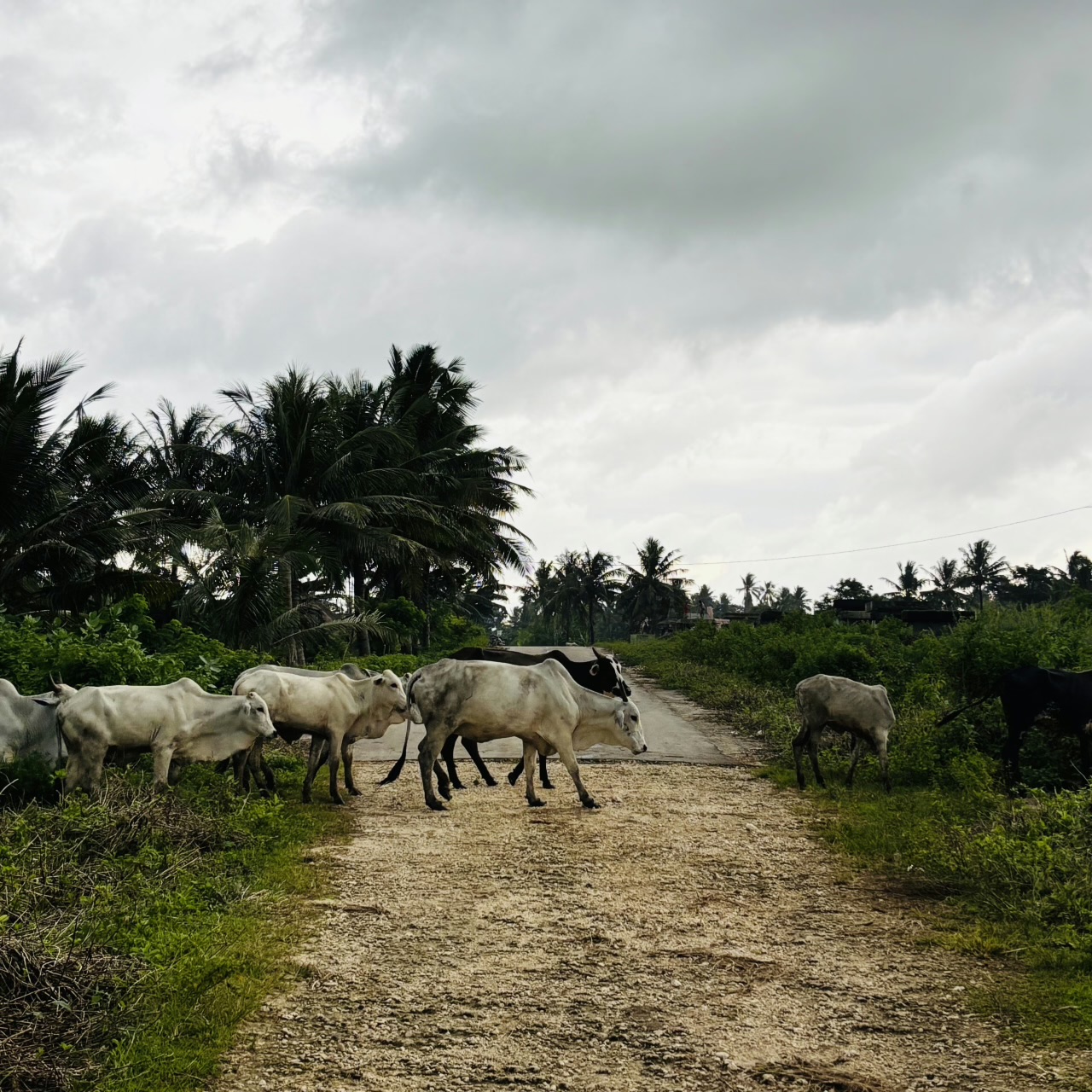
But how could we turn back when a real traditional village lay ahead — one of Sumba’s most famous?
Out of the fields, the villages emerged — silent, timeless.
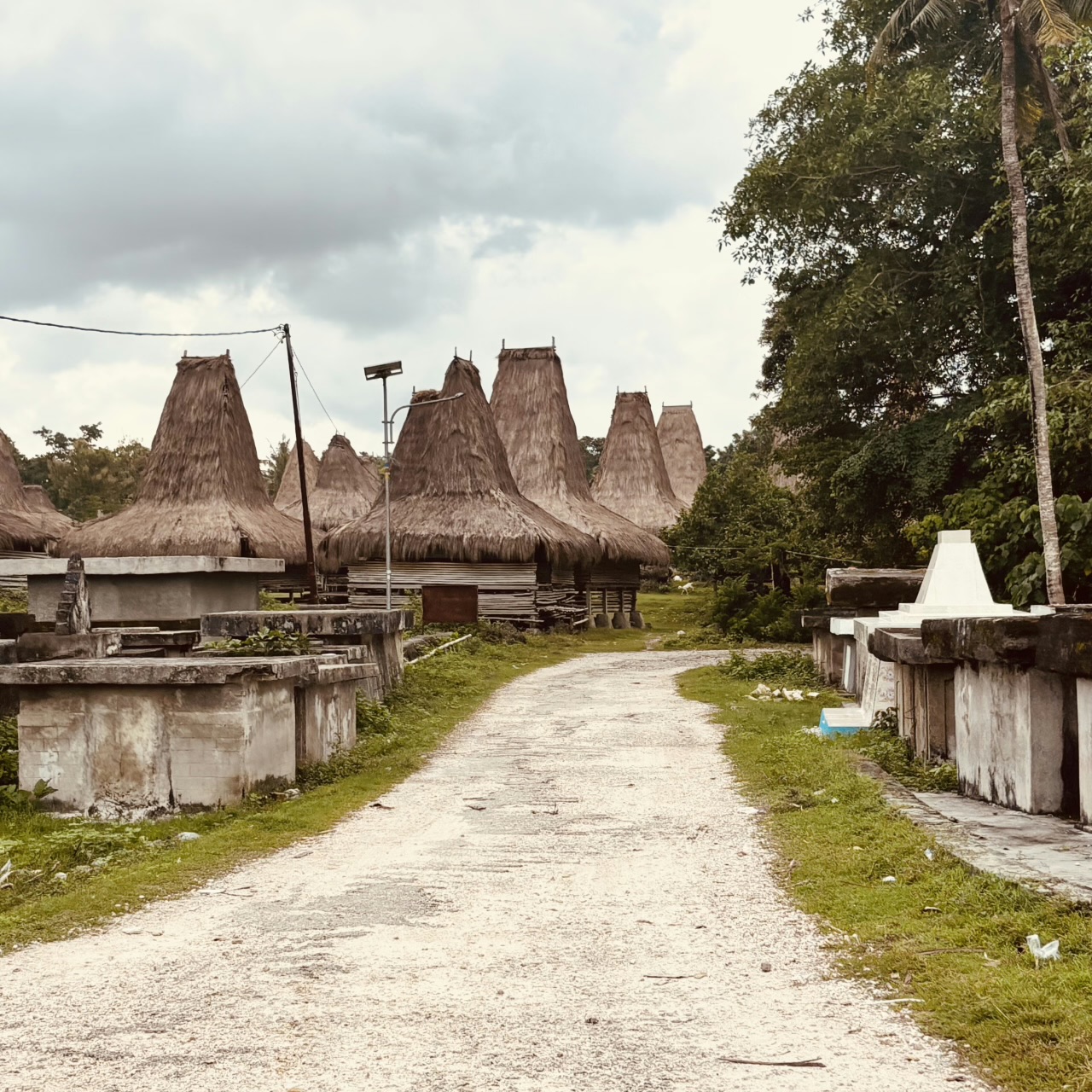
Tall, pointed roofs like ship masts rose above the trees. These weren’t just roofs — they were sacred symbols. The higher the roof, the higher the family’s status.
The houses, made from wood and bamboo, were layered:
- The lower level for animals,
- The middle for people,
- The top — near the peak of the roof — for sacred heirlooms: textiles, relics, ceremonial animal skulls.
At night, they light small fires inside, burning special grasses that repel mosquitoes, snakes, and evil spirits.
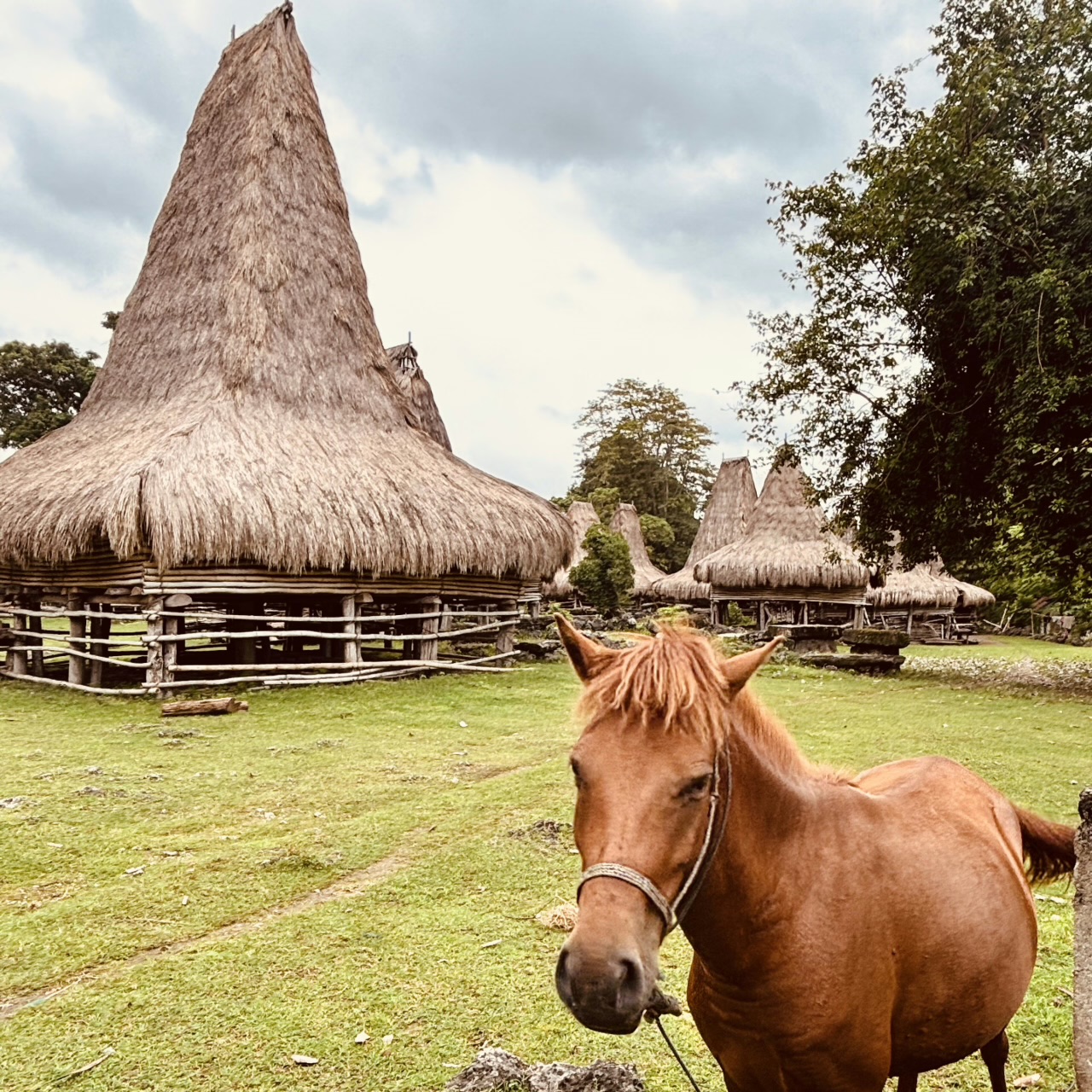
The smoke rises through the thatched roof, filling the home with the rich, earthy scent of ancient life.
Outside every home — stone tombs. The ancestors stay close, protecting and guiding the living.
You can’t simply wander into a village — you must be invited. Out of respect. Here, everything is sacred: the land, the homes, the people.
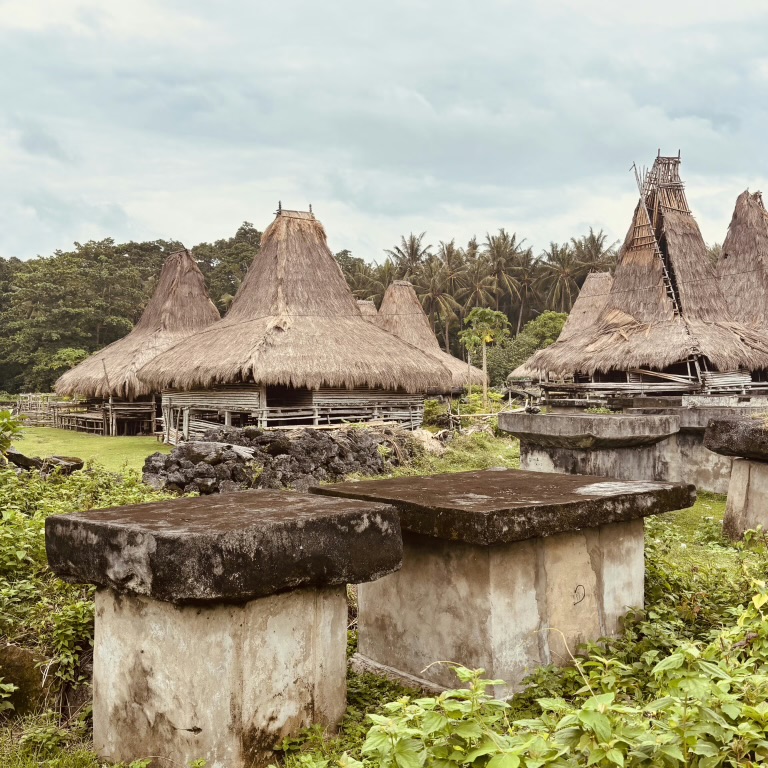
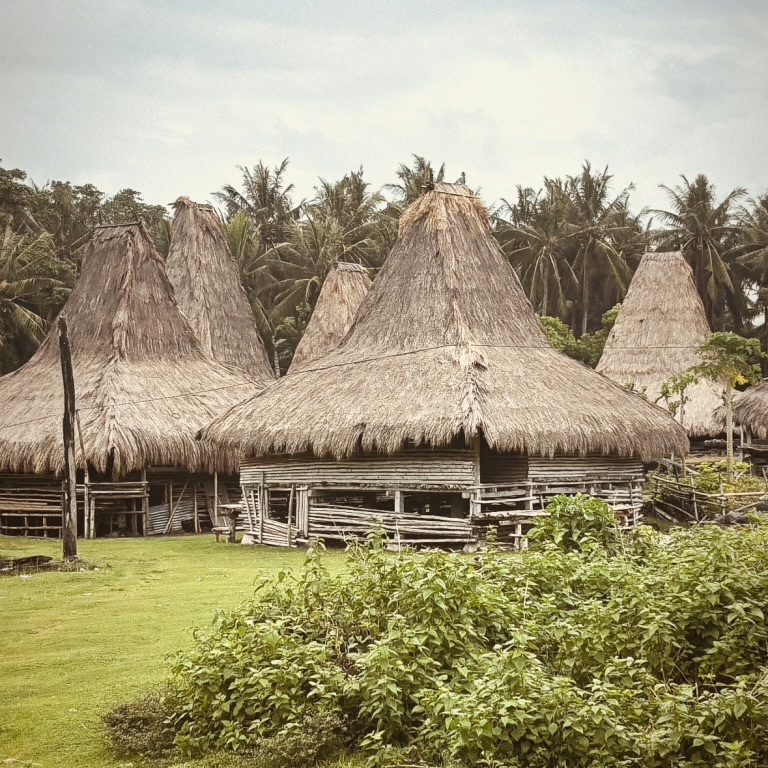
Though the villages seemed silent, life thrived — just not on display.
As a drizzle began and distant thunder rumbled, we pressed on — rain and storms only added drama to the journey.
Eventually, we reached the main village — a little more modern, with metal roofs, concrete walls, satellite dishes.
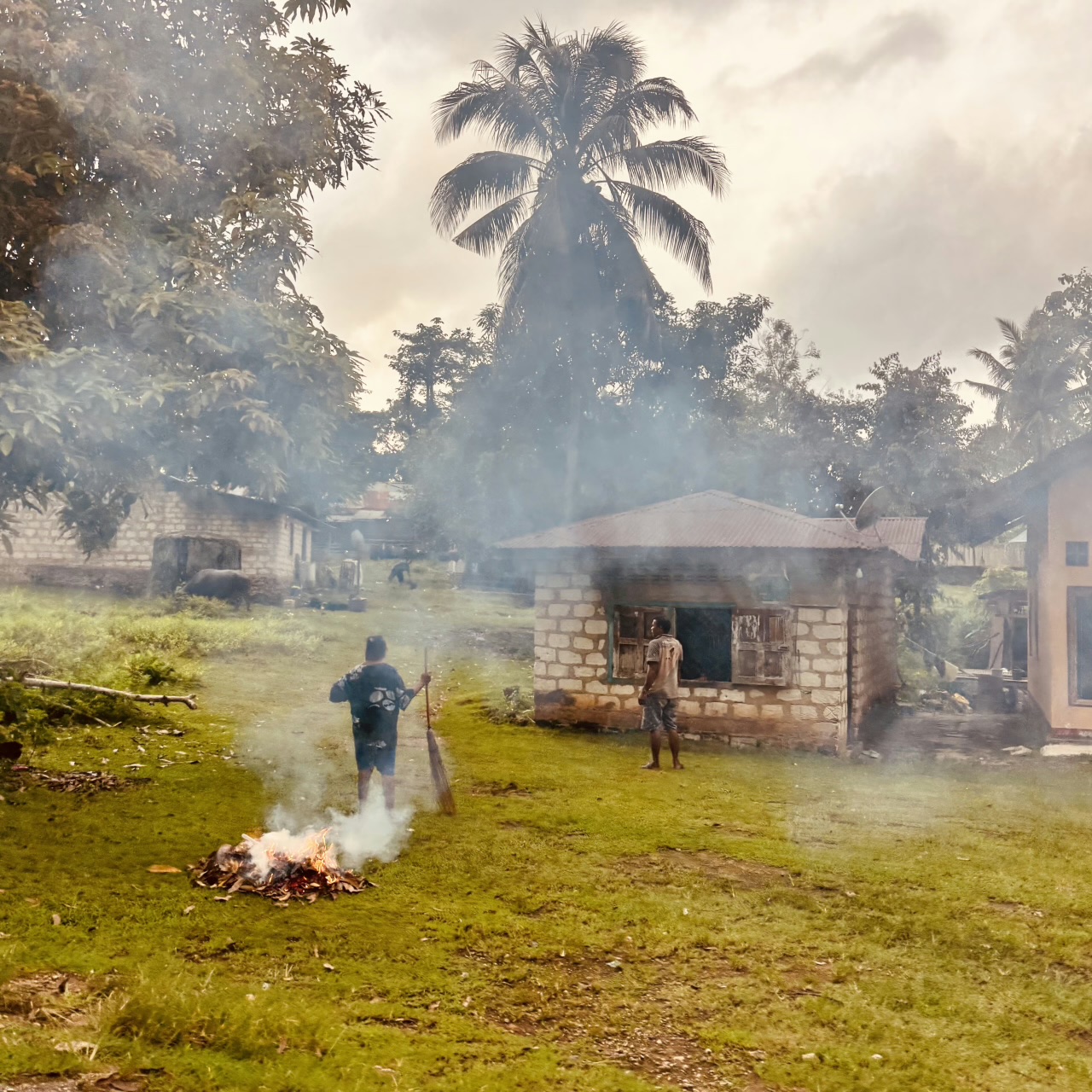
People waved, smiling warmly. No checkpoints, no demands.
The rhythm was different here — not wild, but still deeply real.
These were the lands of Pasola — Sumba’s sacred horseback battles.
Men charge at each other with spears — not to wound, but to prove bravery and honor traditions.
Blood spilled during Pasola is an offering, a prayer for a good harvest.
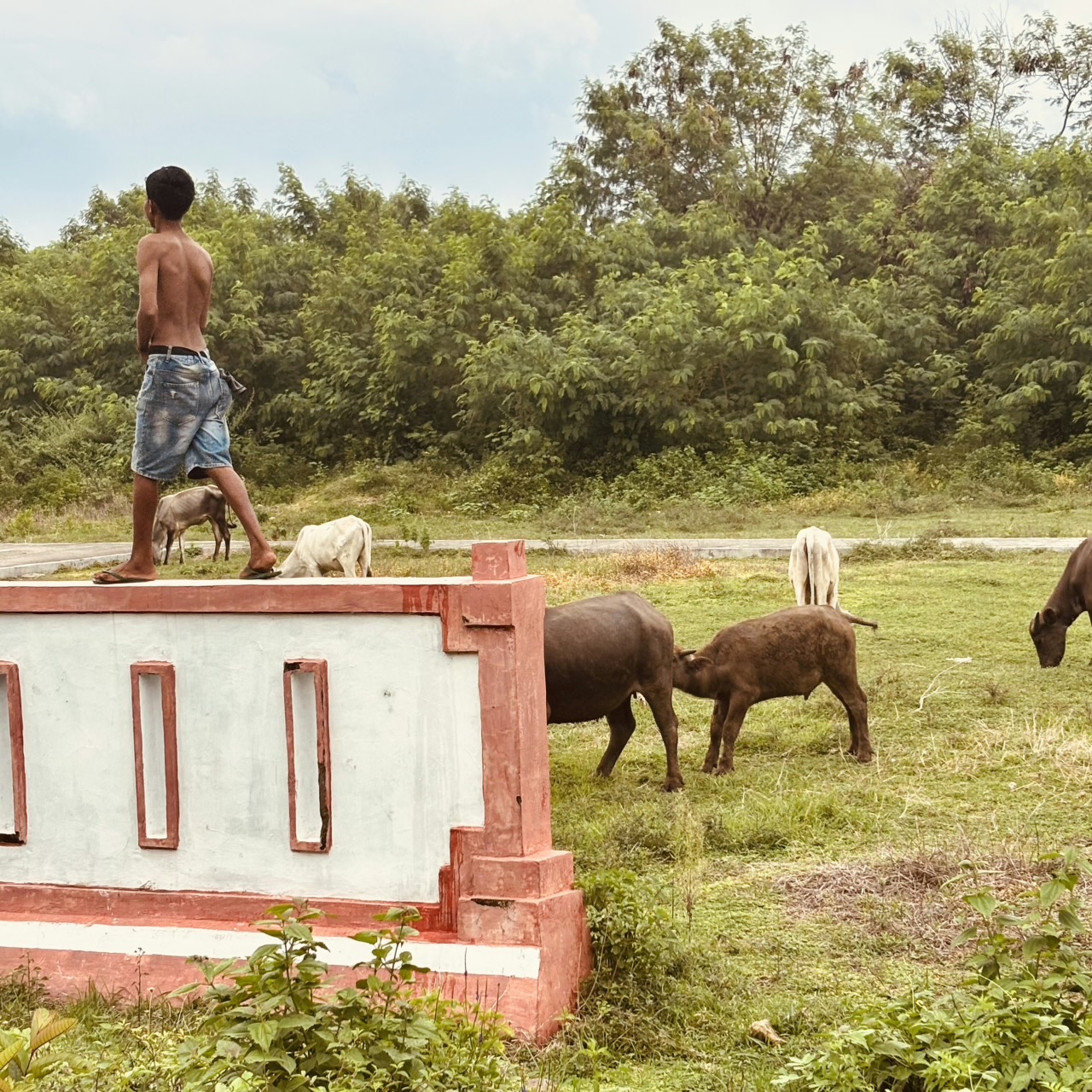
We passed the local market, but the storm was coming fast, and we pushed on.
Religion here is woven with nature and ancient beliefs.
Though most Sumans today are Christians (Catholic or Protestant), their roots — Marapu animism — still echo in every ritual, every relationship with land, rain, and horses.
Arriving at Ratenggaro beach, the sky was almost black. The ocean wind howled. A boy ran up to us, wielding a bamboo spear, and asked sternly for 50,000 rupiah.
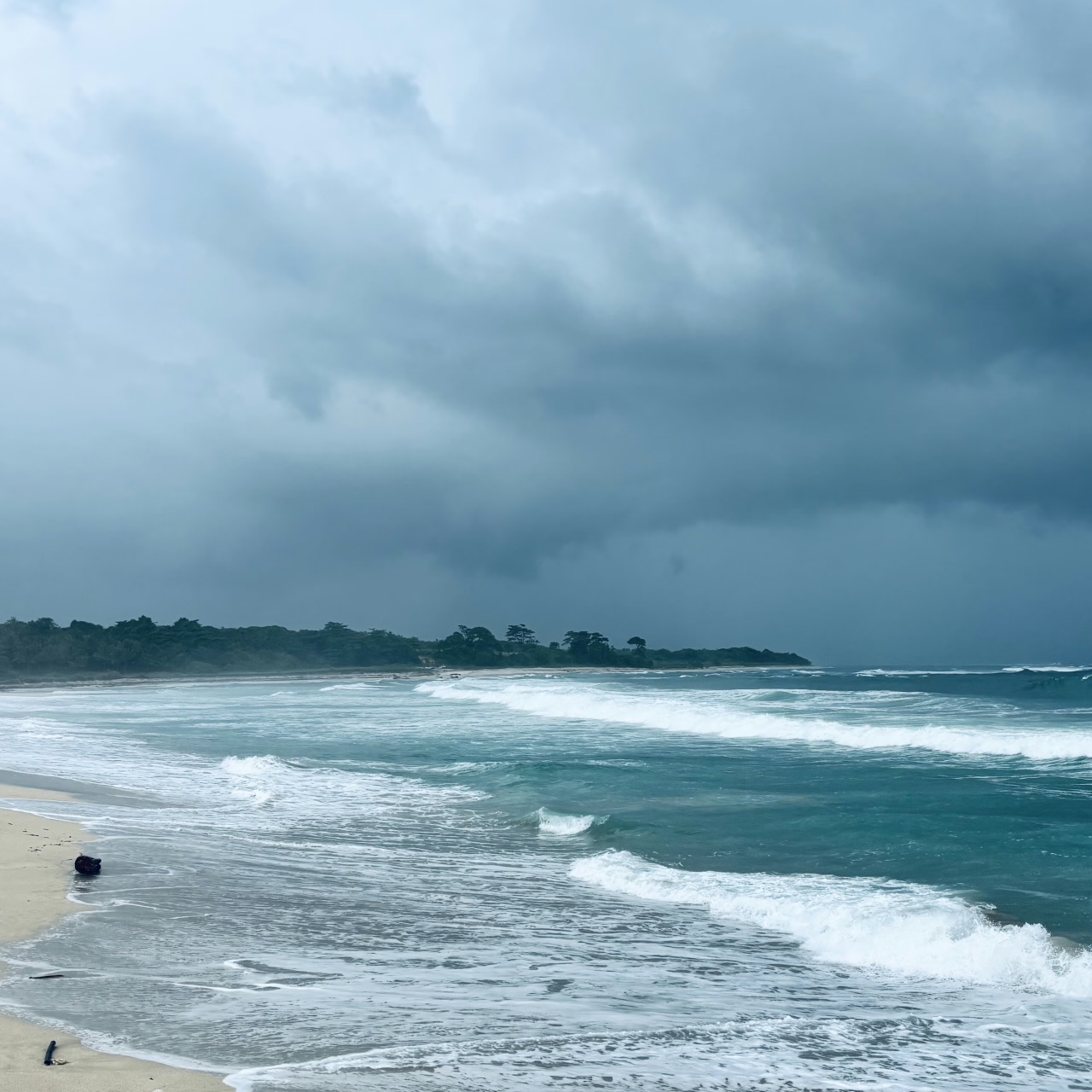
We paid — that’s just how it works here — and quickly turned back toward the hotel.
The wind nearly blew us off the road. The rain was moments away. But inside, everything was peaceful. We knew: this adventure was complete.
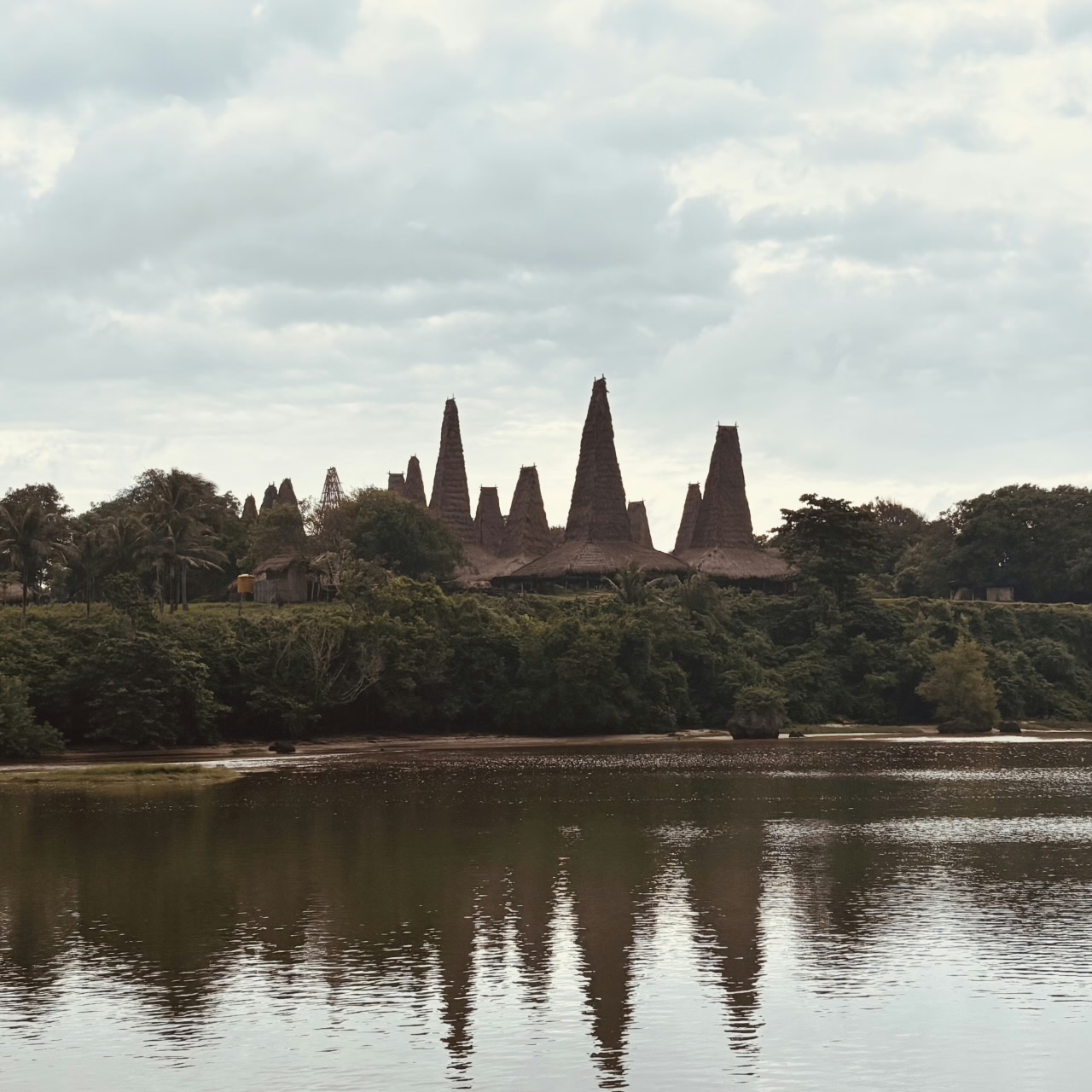
That was our short, three-day journey to West Sumba.
A world of wild nature, dusty roads, ancient traditions, beach horses, and kids with spears.
A place where there are no ATMs — but skies so alive, and faces so open, you feel like you’re stepping into a movie.
I hope Sumba stays this way — untouched, raw, and wild.
At times it was scary, at times rough, at times like a scene from Out of Africa or The Lost City of Z.
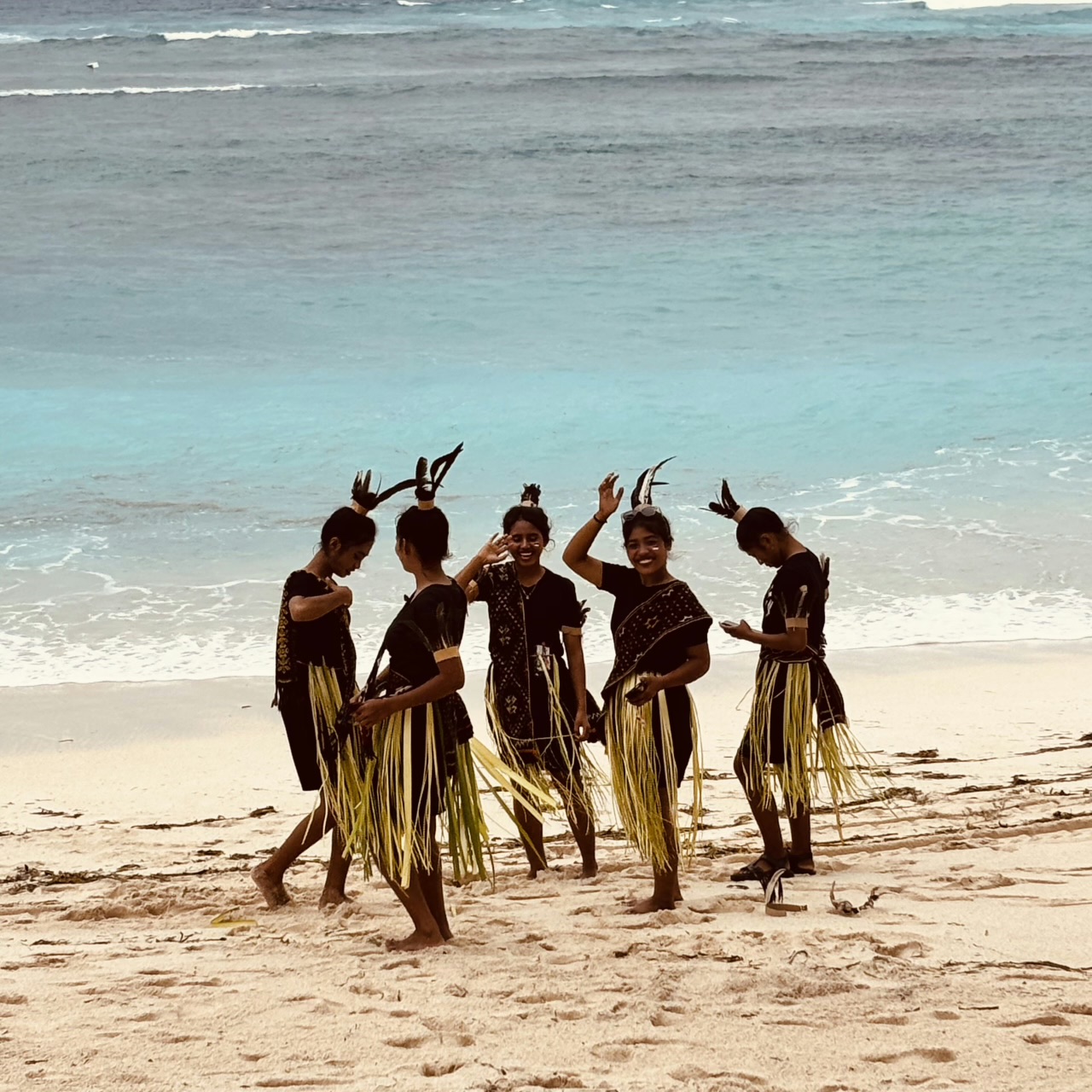
But if you crave connection with nature, want to hear the whispers of ancestors, and prefer roads that lead not to malls but to the soul of an island — Sumba is for you.
A few things to remember:
- Respect traditions.
- Never enter a village without permission.
- And yes, always carry small change — it could save you from spit, stones, and bamboo spears!
And the beaches…
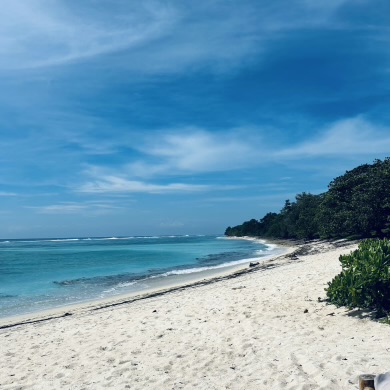
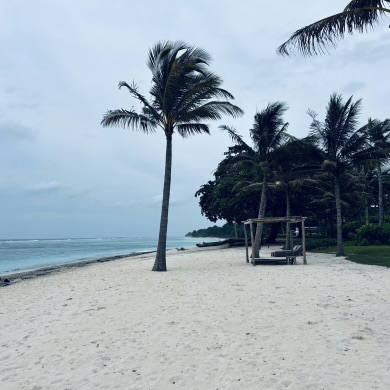
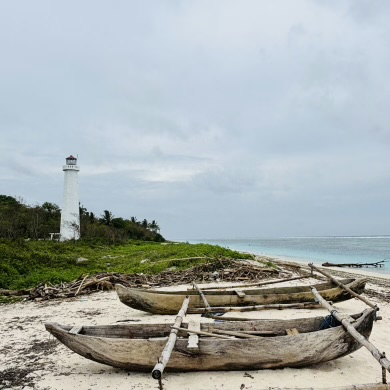
Postcard-perfect, without the filters. White sand, deep blue waves, and not a soul around.
You stand barefoot, the wind tousling your hair, watching the sun sink into the ocean — and it’s the most beautiful sunset you’ve ever seen.

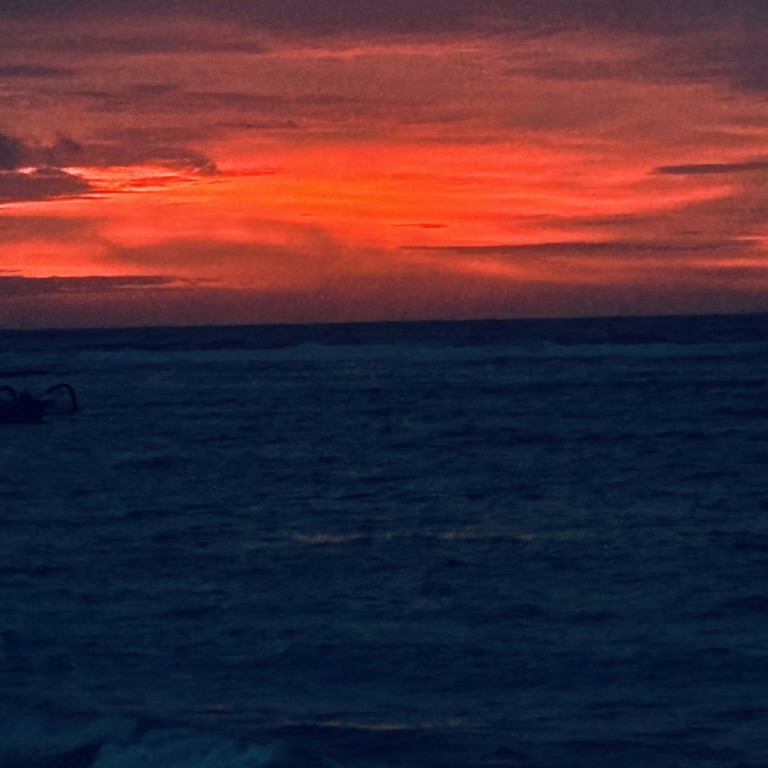
Meanwhile…
I was so enchanted by this island, I’m already planning my next trip — this time, to East Sumba.
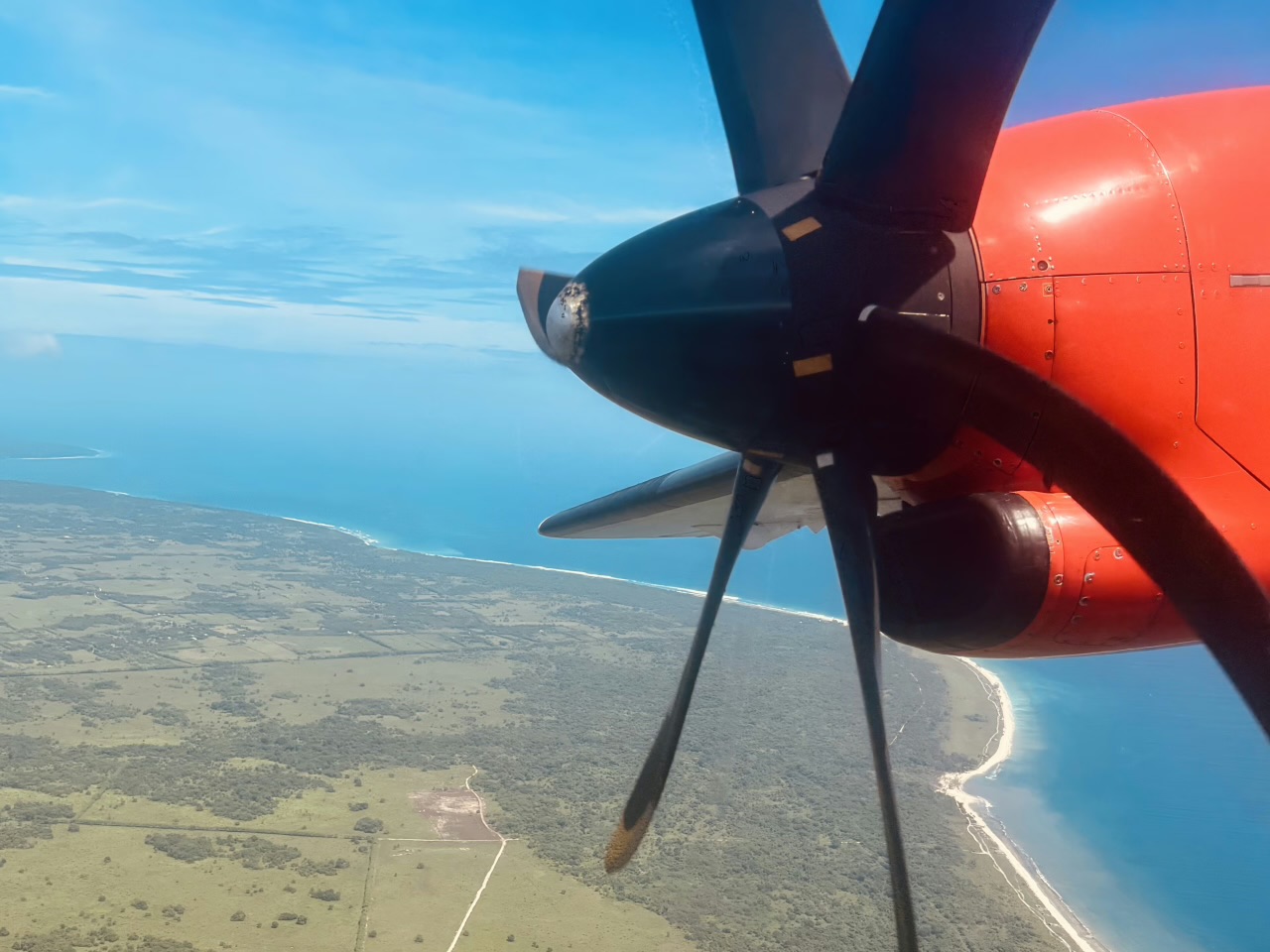
By the way, you could hire a guide from the hotel — and maybe the journey would be safer, easier, and more educational.
But we chose to go with the flow — to experience Sumba raw and unfiltered.
And I wouldn’t change a thing.


-preview.jpg)
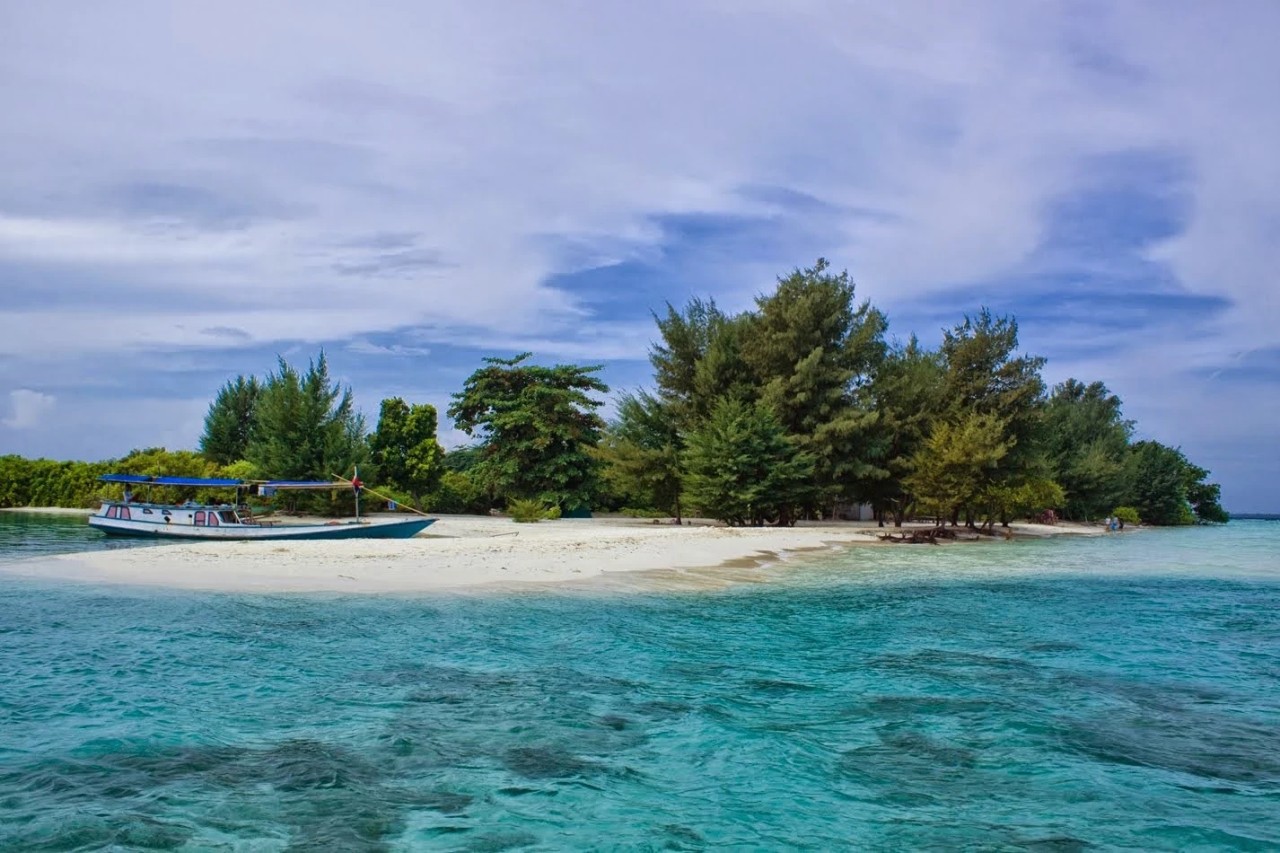
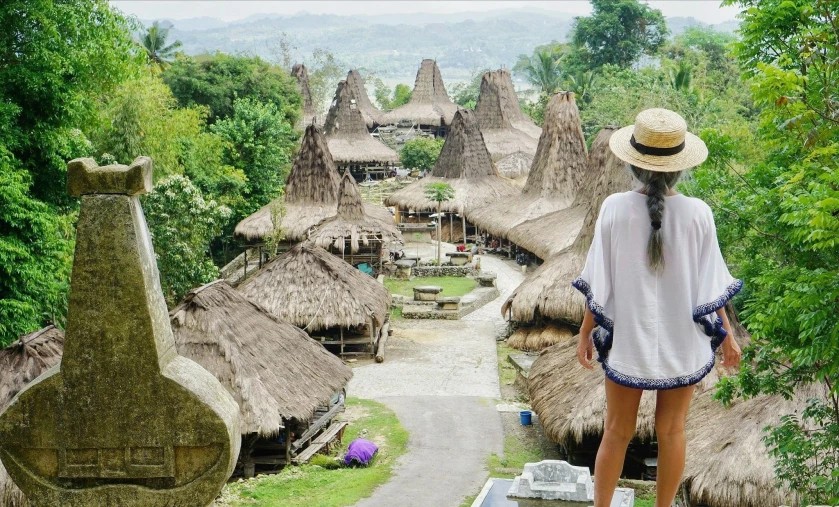
You can add one right now!